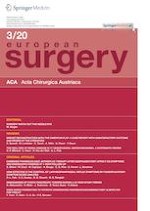Anzeige
10.12.2018 | original article
Does giving pasireotide to patients undergoing pancreaticoduodenectomy always pay for itself?
Erschienen in: European Surgery | Ausgabe 3/2020
Einloggen, um Zugang zu erhaltenSummary
Background
Previous cost evaluation studies reported either no increase or cost-saving using pasireotide in patients undergoing pancreaticoduodenectomy. We examined the likelihood and magnitude of cost-saving when using pasireotide at our institution to determine the generalizability of prior reports.
Methods
Cost data were obtained for a cohort of 440 patients undergoing pancreaticoduodenectomy at a single institution during 2009–2016. A statistical model was used to simulate the cost of patient care had they received pasireotide. Sensitivity analyses were performed to assess the impact of pasireotide price and pancreatic fistula rate on cost.
Results
With a fistula rate of 10.2% and a current price for pasireotide of $1257, the likelihood of cost-saving is 60%. When cost-saving does occur, the mean cost-saving per patient is $1442, 2.5–97.5% quantile difference (QD): $69–3756. At the same pasireotide price but with a fistula rate of 30%, the likelihood of cost-saving increases to 91% with a mean cost-saving of $4030, 2.5–97.5% QD: $402–8511. At the same fistula rate but with a pasireotide price of $1000, the likelihood of cost-saving increases to 65% with a cost-saving of $1566, 2.5–97.5% QD: $75–3979.
Conclusion
At its current price, and with the fistula rate at our institution, pasireotide is more likely to pay for itself than not, but there is a significant probability that it will not be cost-saving. Negotiating a better price (i.e., to the lowest found in the literature) will reduce the likelihood of pasireotide not being cost-saving by 5%.
